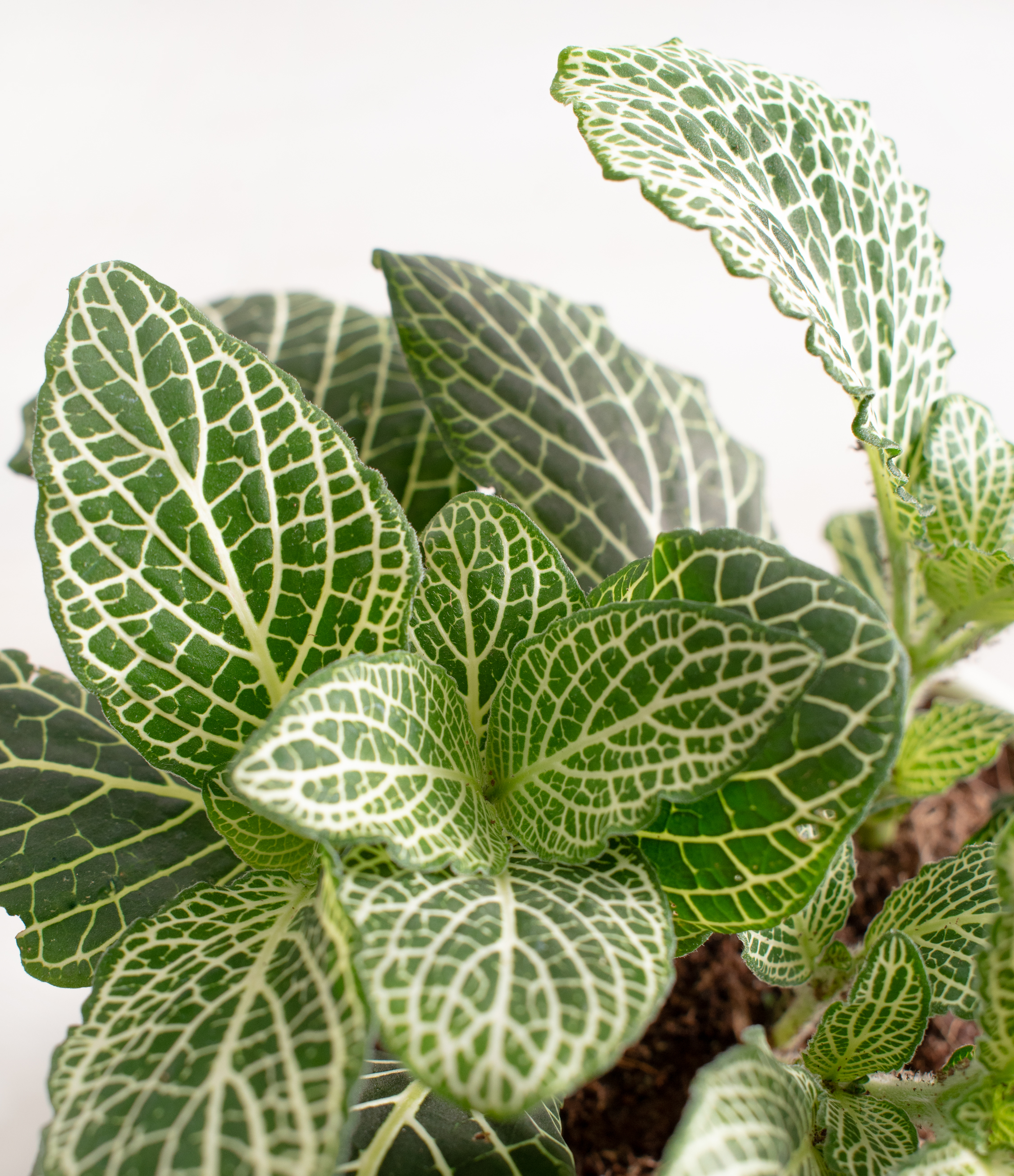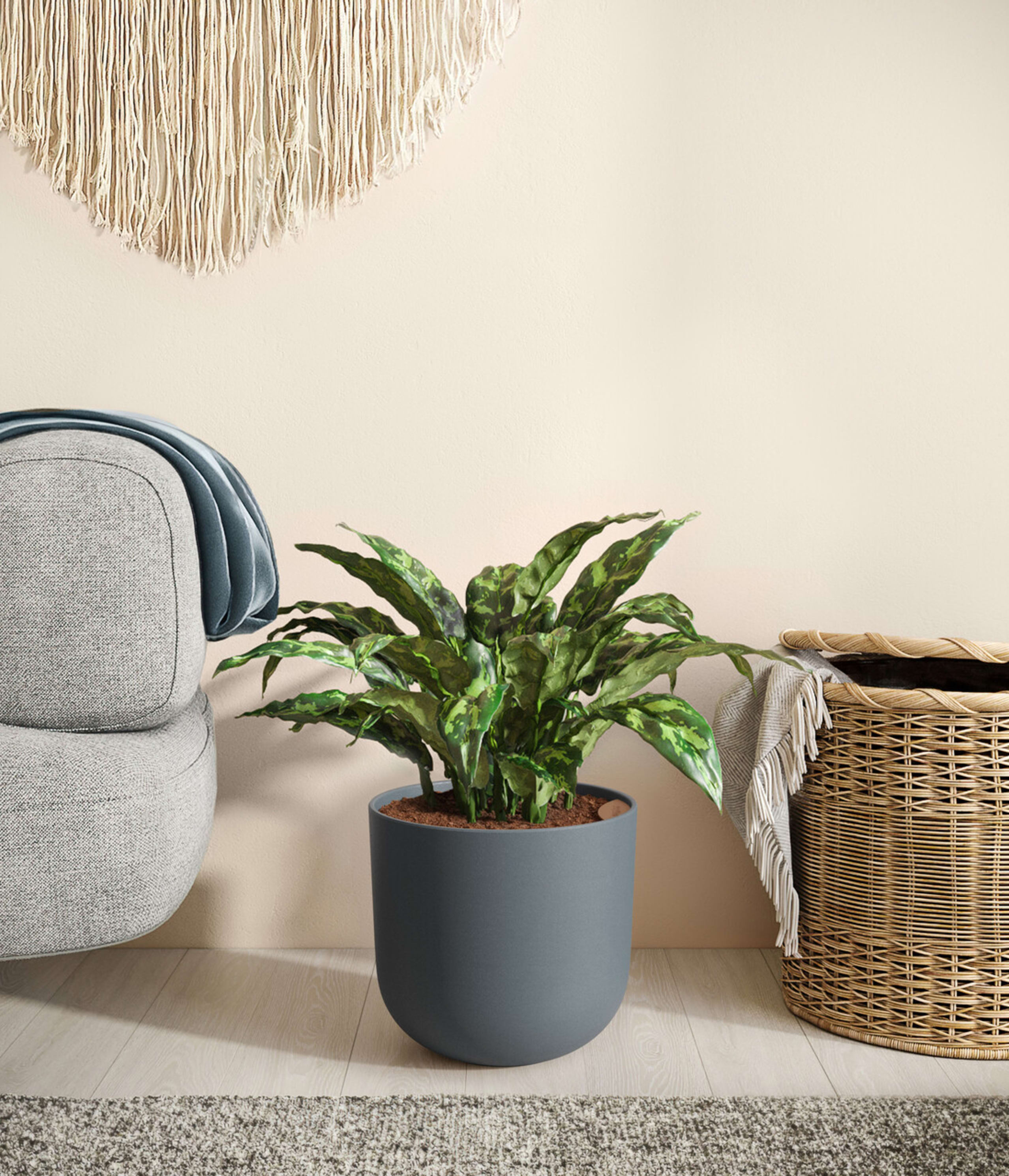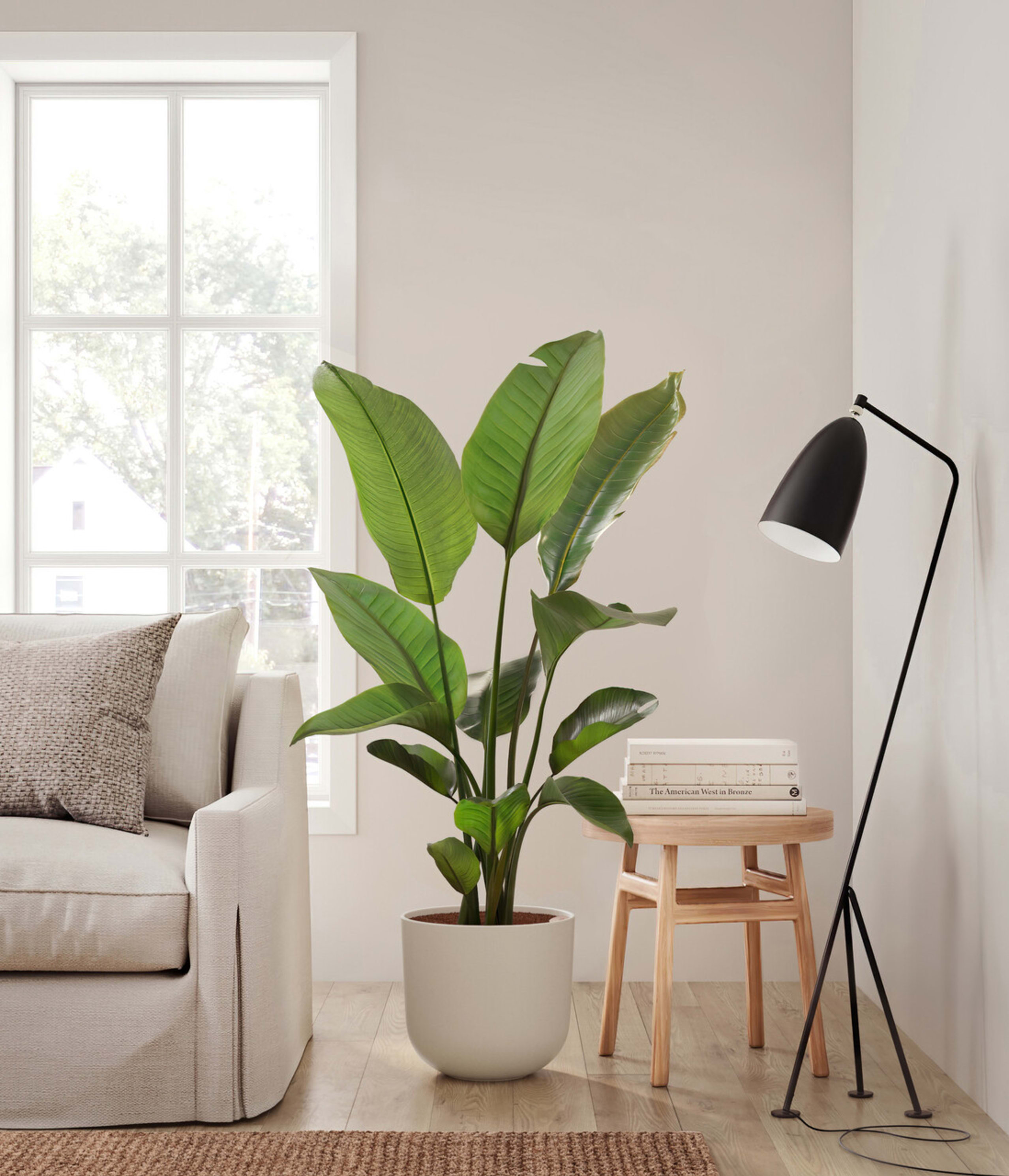How to Care for Nerve Plant / Fittonia
About Nerve Plants (Fittonia)
Native to the tropical rainforests of South America, the Nerve Plant (Fittonia) is admired for its vibrant, veined leaves in striking shades of green, pink, white, or red. This member of the Acanthaceae family brings a splash of color to indoor spaces, making it a popular choice among plant enthusiasts. Its intricate leaf patterns and compact size make it perfect for adding a tropical touch to smaller spaces.
Other common names
- Fittonia
- Mosaic Plant
- Painted Net Leaf
- Nerve Vine
- Dwarf Nerve Plant
- Dwarf Silver Fittonia
How Often Should I Water My Nerve Plant (Fittonia)?
With easyplant, maintaining the right water level for your Nerve Plant is simple. Check the easyplant reservoir once a month and refill it when empty to keep your plant healthy and hydrated.
Nerve Plant (Fittonia) Light Needs
Nerve Plant grows best in a space with bright indirect light, where the sun rays are diffused. Avoid placing it in spaces with harsh direct sunlight or spaces without natural light.
The best location is near an east-facing window where it can receive soft, gentle morning sunlight that won't scorch its delicate leaves. It can also do well in a north-facing window or in areas where the light is filtered through sheer curtains or blinds. Avoid placing it near windows with harsh, direct afternoon sunlight, such as south or west-facing windows, as the intense light can cause leaf burn. The Nerve Plant can also adapt well to the light provided by fluorescent bulbs, making it an excellent choice for offices or rooms with less natural light.
Nerve Plant (Fittonia) Plant Care
The Nerve Plant flourishes best in a stable, warm environment that mimics its native habitat.
Rotate the plant once a month to promote even growth, and gently clean the leaves with a damp cloth to keep them dust-free and enhance photosynthesis.
Avoid exposure to drafts, sudden temperature changes, and placement near air conditioning or heating vents.
Maintaining a temperature between 65°F and 80°F (18°C – 26°C) with high humidity will help your plant thrive. You can increase humidity by grouping plants together or using a pebble tray filled with water placed near the plant.
How Big Will My Nerve Plant (Fittonia) Grow?
Under ideal conditions, the Nerve Plant can grow up to 6 inches tall and spread up to 12 inches wide. This slow-growing plant usually takes a few years to reach its full size.
Temperature & Humidity
The Nerve Plant thrives in warm temperatures, ideally between 65°F and 80°F (18°C – 26°C). Avoid sudden temperature changes, drafts, or placing it near air conditioning and heating vents, as these can stress the plant and cause leaf damage.
Being native to tropical rainforests, the Nerve Plant prefers high humidity levels above 50%. To increase humidity around the plant, you can place it on a pebble tray filled with water or group it with other plants to create a more humid microclimate. Avoid exposing it to excessively dry conditions, which can cause the leaves to brown or curl.
Is Nerve Plant (Fittonia) Toxic for Pets & Kids?
The Nerve Plant is non-toxic and safe for both pets and children, making it a great choice for households with little ones and furry friends.
Troubleshooting Common Problems with Nerve Plant (Fittonia)
On your first few days at home, your Nerve Plant may show signs of stress like wilting or yellowing leaves. No worry - this is just the plant adjusting to its new location. If these symptoms persist, check the care routine.
Brown leaf edges may indicate low humidity or underwatering. Make sure to refill the easyplant reservoir once a month and increase humidity by grouping plants or using a pebble tray.
If the leaves are yellowing, it's usually a sign of overwatering. Check the water reservoir and the soil to ensure you're not overwatering, and adjust accordingly.
Curling leaves can occur due to drafts, direct sunlight, or inconsistent watering. Move the plant to a spot with bright but indirect light and away from drafts or vents. Ensure the easyplant reservoir is filled once a month to maintain proper hydration.
Frequently Asked Questions about Nerve Plant Plant
- Is the Nerve Plant safe for pets and children?
Yes, the Nerve Plant is non-toxic, making it safe for both pets and children.
- What kind of light does the Nerve Plant need?
The Nerve Plant thrives best in bright, indirect light. Avoid direct sunlight to prevent leaf burn.
- How often should I water my Nerve Plant?
If using an easyplant pot, check the reservoir once a month and refill it when empty. If you're watering manually, water when the top inch of soil is dry.
- How big will my Nerve Plant grow?
The Nerve Plant can grow up to about 20 inches in height and spread up to 12 inches wide under optimal conditions.
- Why are the edges of my Nerve Plant's leaves turning brown?
Brown leaf edges often indicate low humidity or underwatering. Make sure the easyplant reservoir is refilled once a month, and consider increasing humidity around the plant.

 Small Plants
Small Plants Medium Plants
Medium Plants Plants Collections
Plants Collections Large Plants
Large Plants Huge Plants
Huge Plants